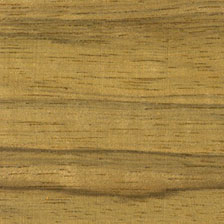Frake

Other names
Limba, Black Limba, White Limba, Korina, Afara, Limbo
Scientific Name
Terminalia superba
Family
Combretaceae
Description
The heartwood is grey to pale yellow or pinkish white, darkening to pale reddish brown, occasionally with a nearly black inner part. It is not clearly demarcated from the 12–15 cm wide sapwood. The grain is straight to slightly interlocked, texture moderately coarse. The wood is moderately lightweight to medium-weight, with a density of (370–) 430–730 kg/m³ at 12% moisture content. The heartwood is extremely resistant to impregnation with preservatives, the sapwood is permeable
Density
(H=12%) : 0,54
Treatability
Moderately permeable
Seasoning
It air dries rapidly with little degrade. Once dry, the wood is stable in service.
Stability
moderately stable
Durability
The wood is not durable, being liable to attacks by pin-hole borers, powder-post beetles, longhorn beetles, termites and marine borers.
Workability
The wood is easy to saw and work with both hand and machine tools; the blunting effect on cutting edges is slight. The wood finishes well, but the use of a filler is necessary. It holds nails and screws well, but has some tendency to splitting. It glues satisfactorily. The wood can be made into good-quality veneer by slicing as well as rotary peeling. The steam-bending properties are poor.
End-Uses
- Veneer for interior of plywood
- Veneer for back or face of plywood
- Blockboard
- Current furniture or furniture components
- Seats
- Interior joinery
- Interior panelling
- Moulding
- Light carpentry
- Glued laminated
- Glued laminated
- Boxes and crates
- Fiber or particle boards
- Wood-ware
- Sliced veneer
Notes : Wood splinters may cause severe inflammation of the skin, and sawdust allergic reactions to skin and respiratory organs in wood workers.
Download the complete data sheet